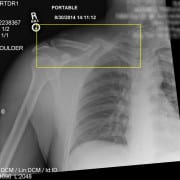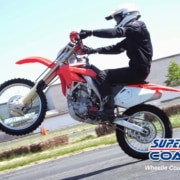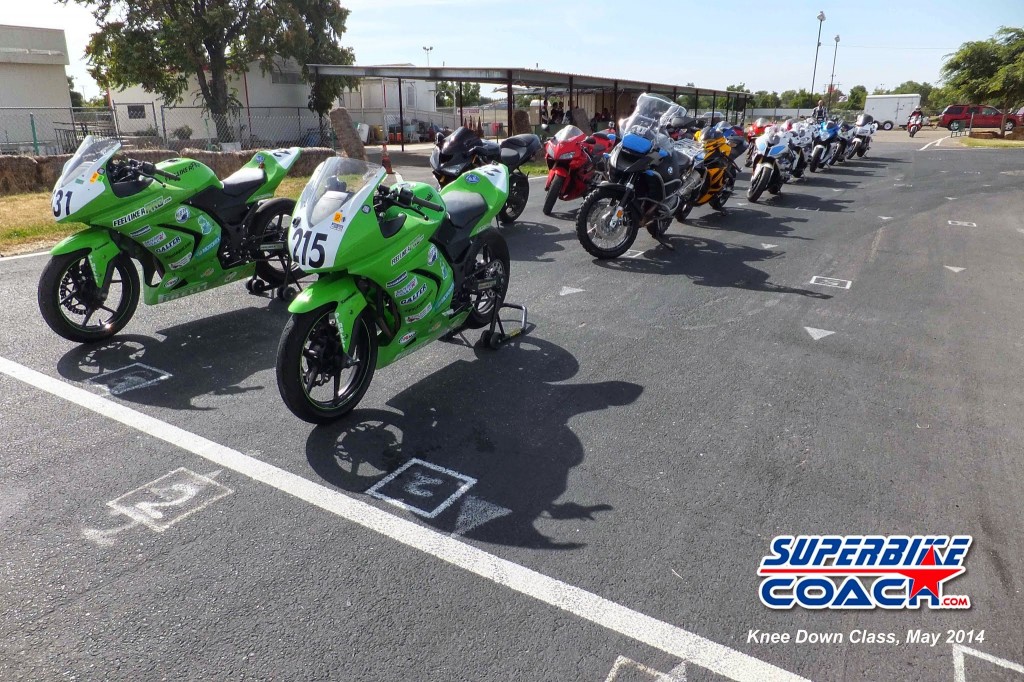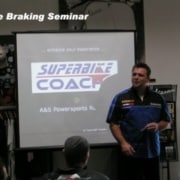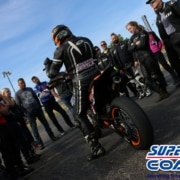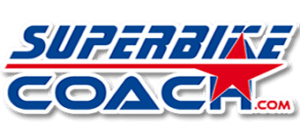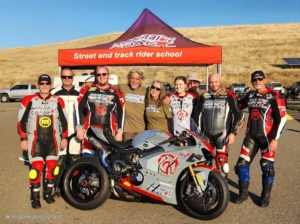Many times I am teaching Track Drill 1on1 students according to their skill level in the slow group. This is typically group C, or B-, depending on the track day organizer and race track we’re going with. While my student is pretty much safe and in control, I see almost every time a total disaster for a whole lot of other inexperienced riders all over a track day.
The spectrum I’ve seen in all the years I have been doing this ranges from $300 scratches on the bikes up to totals in material, and with the stuff you can’t repair, it goes from bruises to broken bones, lost jobs, and even up to a lost life. All of that, 99% of the time, for super dumb reasons… panic attacks, target fixation, and overreacting, which are triggered by a ‘moment of instability’ in confidence.
Whoever attends my programs knows what components are the essential nutrients for building ‘confidence’: knowledge, training & correction, practice. Instead, those riders skip all of that, hurting themselves, and even worse… involving other riders in their crash as well. Mostly, their excuses are totally off reality: someone else, the tires, the suspension, or their bike are the top excuses for f..’ing things up massively. This video is a perfect example, which is a YouTube pick from thousands of clips like it:
The gentleman on the video comes out of the pit lane on cold tires on the Laguna Seca Raceway, and starts with not much “foreplay” with more or less useful hanging off exercises. At that point I should mention that one rule of the Laguna Raceway is to not to go on the race line on turn 3 if you’ve just entered the track. But anyway, he feels obviously “ready” to follow a faster rider into turn 5. His track day is done right there, and his friend behind him seems to go down as well… just because of these things: ego, cold tires, target fixation, panic, and overreacting.
So I thought I’d give some tips for less or inexperienced riders who are up to attacking their first track day, in the hope that this will help them and others stay healthy:
- If you don’t have a decent amount of street miles under your belt, and you are still working on essentials such as shifting, throttle and brake control… don’t come to the track!
- Take a race bike rental to the track. Feel Like A Pro—or we also have track-ready bikes you can rent and insure. These bike are small, and learning comes before torque.
- Don’t watch videos from other riders to “learn” the track you’ve chosen. At the end of the day, you’ll feel lost in reality anyway, and videos like the one above will just freak you out.
- Be careful whose advice you take, and which friend and riding buddies might accompany you. There is a German saying… ‘too many chefs mess up a meal’.
- Don’t change to ‘better’ tires, but stick to the ones you know. Nothing is wrong with them. They are made for millions of riders, and you can go with ‘better’ ones later.
- Same goes for the suspension—where many experts deliver advice. Just know that your suspension is totally fine, and that an experienced rider would get a 20 second faster lap time out of your suspension without any ‘adjustments’. All of that stuff you won’t feel for now and it just makes you more nervous. Do it way later, when you begin to feel these things—and then you can really appreciate and use them.
- If you are not able to find or keep the race line, stop riding before things get worse and ask the right people for advice. You and other inexperienced riders will freak out because you are extremely hard to pass.
- Take advantage of riding with a track day instructor, which is free of charge, or get everything you need from our Cornering School Days or even Track Drill 1on1.
- Don’t do 20 mph sightseeing laps. Other inexperienced riders don’t know how to pass safely and quickly. I’ve seen clusters of 10 – 15 riders which f’s up an entire 20-minute session for pretty much everyone. Don’t be the guy!
- It’s not your bike! It’s all good—it’s made for millions of riders world-wide. Trust in what you have, and understand that you are the component making the mistakes. Don’t look down to the asphalt or target the dirt outside the track. Relax your muscles and breath out while going into a turn.
I could keep going forever, but that would get into individual issues and problem solving “between your ears”, which is my favorite subject! So why not take it easy, for you and others?!
Can Akkaya
Headcoach, Superbike-Coach Corp

